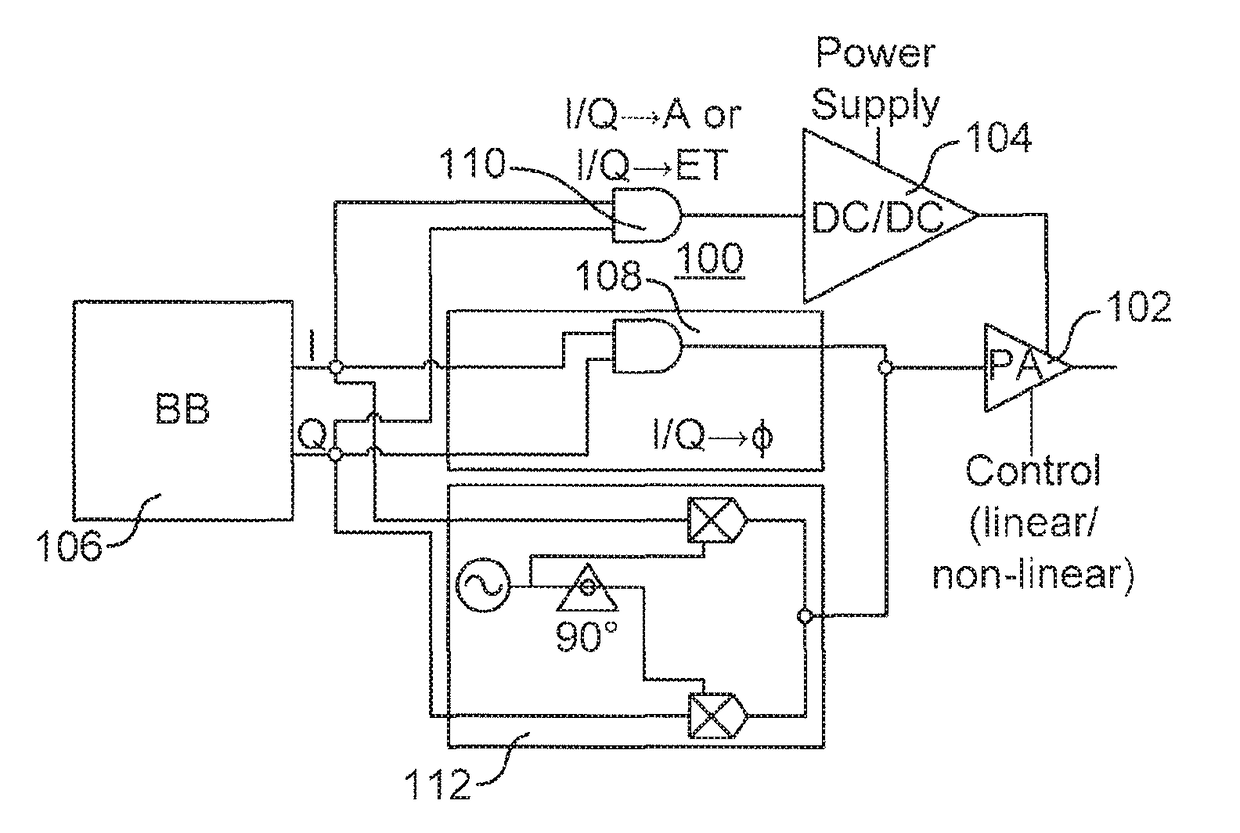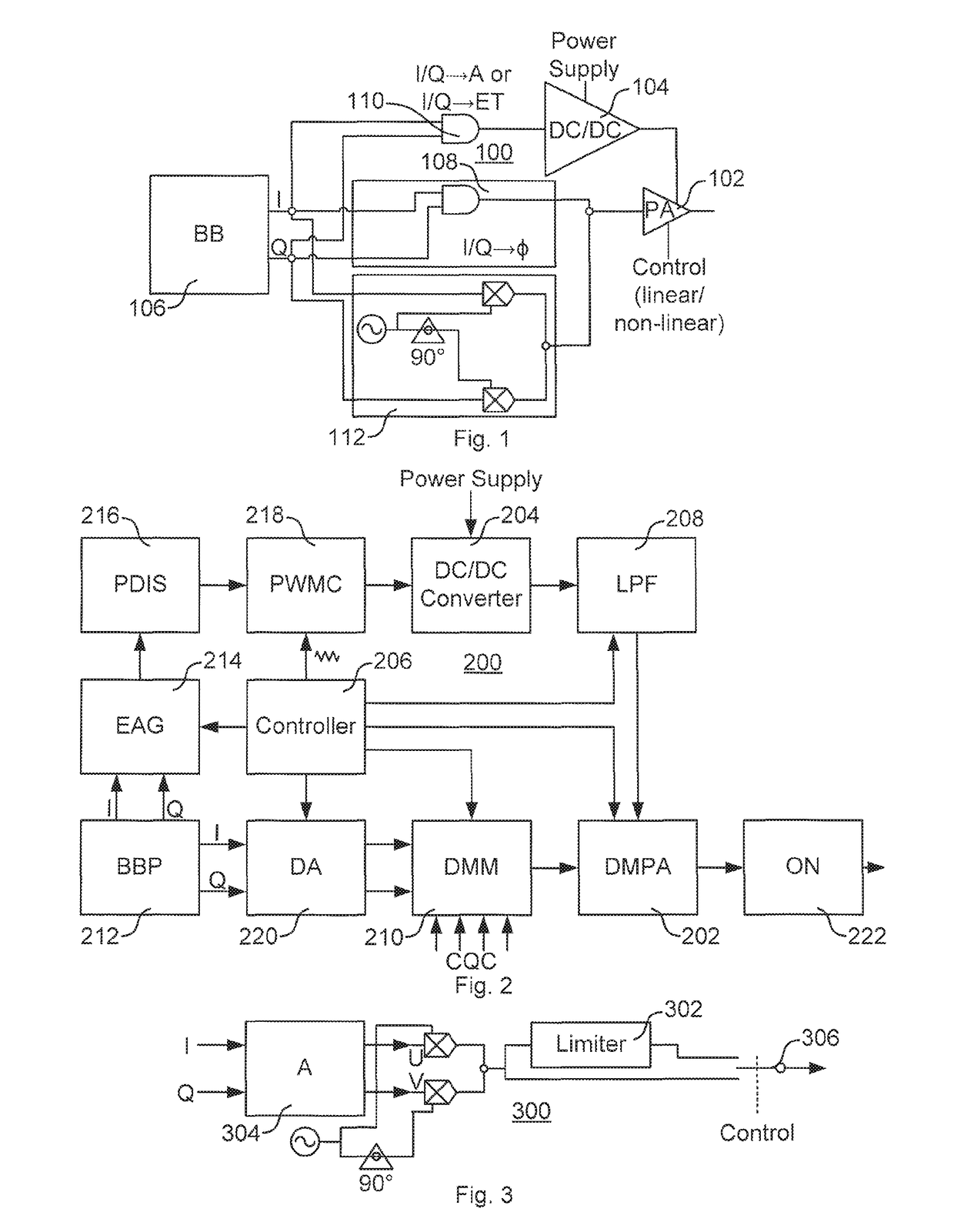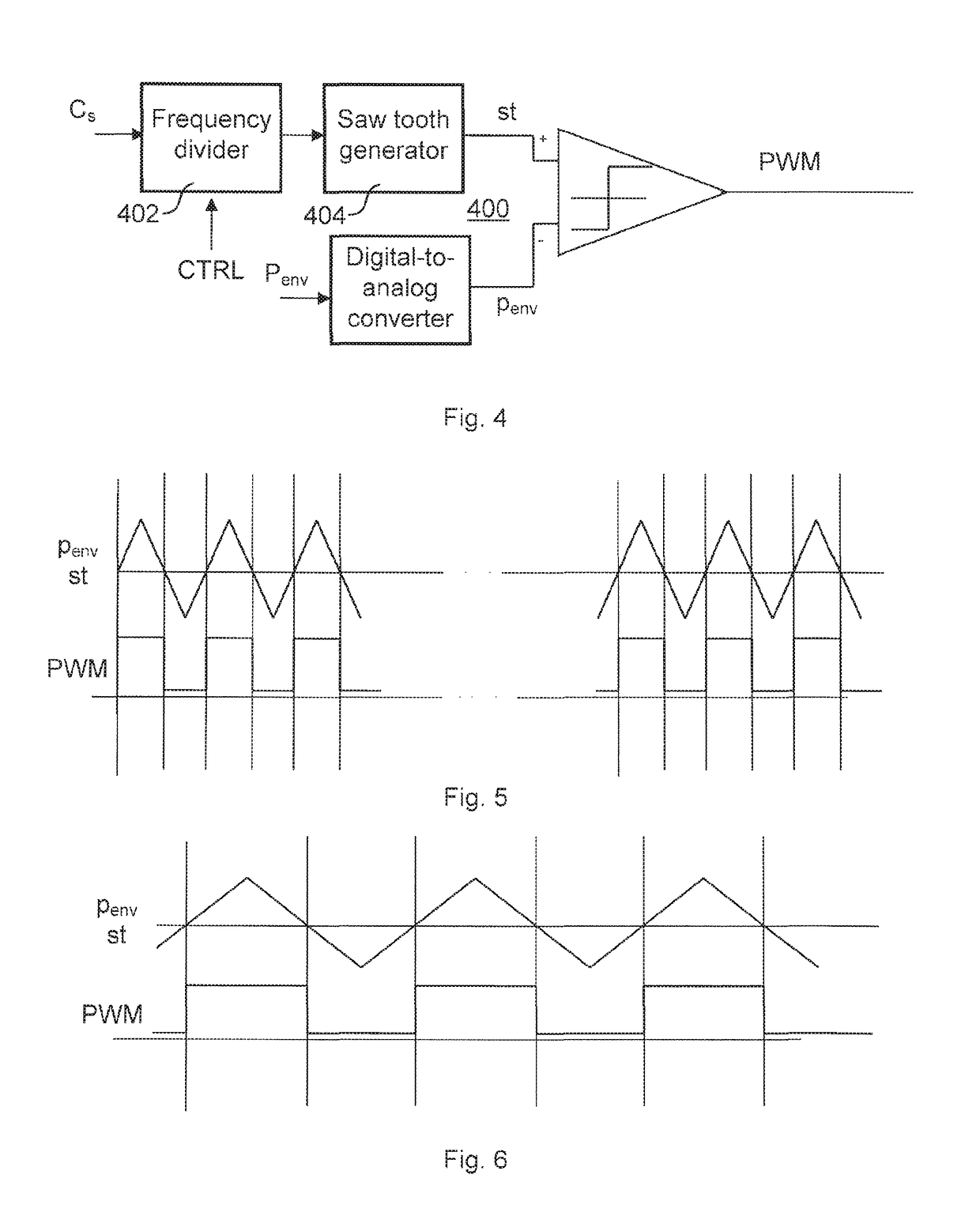Selective power amplifier
a power amplifier and selective technology, applied in the field of selective power amplifiers, can solve the problems of not all energy provided as supply power to the power amplifier becomes signal power, consumes a certain amount of energy, and consumes a large amount of energy, so as to improve the quality of operation, reduce the impact, and reduce the effect of energy consumption
- Summary
- Abstract
- Description
- Claims
- Application Information
AI Technical Summary
Benefits of technology
Problems solved by technology
Method used
Image
Examples
Embodiment Construction
[0054]For the understanding of this disclosure, the reader should be aware that polar modulation enables use of a nonlinear power amplifier (PA), which is power efficient, but implies bandwidth expansion issues. Using polar modulation is thus not suitable for wide bandwidth applications like wide band 3GPP LTE where bandwidths of 20 MHz can be used. A linear PA with a constant supply voltage does not imply such bandwidth expansion issues, but is significantly less power efficient than a non-linear PA. The linear PA can be made more power efficient by using envelope tracking. Envelope tracking requires use of a linear PA, which is inherently less power efficient than the non-linear PA, but is still more efficient than a PA without envelope tracking, i.e., a constant supply voltage driven PA. High power efficiency implies that more radio power is provided to the antenna and / or less heat is created by the power amplifier at a given supply power.
[0055]FIG. 1 illustrates a transmitter ci...
PUM
 Login to View More
Login to View More Abstract
Description
Claims
Application Information
 Login to View More
Login to View More - R&D
- Intellectual Property
- Life Sciences
- Materials
- Tech Scout
- Unparalleled Data Quality
- Higher Quality Content
- 60% Fewer Hallucinations
Browse by: Latest US Patents, China's latest patents, Technical Efficacy Thesaurus, Application Domain, Technology Topic, Popular Technical Reports.
© 2025 PatSnap. All rights reserved.Legal|Privacy policy|Modern Slavery Act Transparency Statement|Sitemap|About US| Contact US: help@patsnap.com



